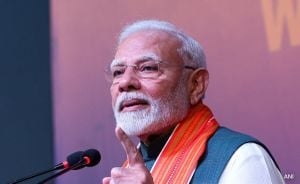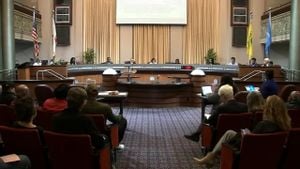With the autumn season enveloping Delhi, the city is once again grappling with severe air pollution, raising alarm bells among residents and officials alike. The air quality index (AQI) recently soared to troubling levels, peaking at 411, indicating 'severe' pollution. Despite slight improvements due to changing weather patterns, with the AQI reducing to 396 by evening, the situation remains dire, pushing the government to take drastic measures.
The Delhi government mobilized under the Graded Response Action Plan (GRAP) to impose Stage III restrictions. This included banning the entry of certain categories of vehicles such as private BS III petrol and BS IV diesel cars, as well as interstate non-electric buses. These measures are desperately aimed at curtailing pollution levels, which not only affect respiratory health but also reduce overall quality of life.
Delhi Environment Minister Gopal Rai announced additional public transport options as part of these emergency measures. He detailed the plan to deploy 106 more cluster buses operated by the Delhi Transport Corporation and to increase metro train services by sixty additional trips. Such initiatives seek to encourage the use of public transportation instead of private vehicles, which contribute significantly to air pollution.
But it’s not just transportation changes. The government has recognized the need for immediate actions, going so far as to contemplate artificial rain—an extreme measure aimed at alleviating the current air quality crisis. Construction activity related to private construction and demolition has been halted as well, with these actions reflecting the urgent crisis the city faces.
This year, the pollution spikes have prompted schools across the region to adapt. Many have shifted classes online for younger students, and educators are scrambling to secure other measures to protect students from harmful air quality. Despite these interventions, many educators express frustration at the situation, labeling such moves as temporary fixes rather than long-term solutions.
Ameeta Mulla Wattal, chairperson of DLF Foundation Schools, voiced her concerns about the inconsistent responses from authorities over the years. "The knee-jerk reactions every year don't address the fundamental problem of pollution we have known about since 2001," she pointed out. This sentiment echoes throughout the educational community, as directors and principals stress the need for sustained efforts rather than intermittent actions.
Pollution has also influenced community activities, with some educators noting how students, oblivious to the serious health risks, still partake in outdoor events. Principal Pallavi Sharma emphasized the importance of genuine public awareness about the dangers of living under such air quality conditions. She shared her own experiences of health distress brought on by pollution, expressing disbelief at the lack of action from authorities.
Many parents are worried as well. Reports suggest numerous families have chosen to send their children abroad due to the unbearable living conditions caused by pollution. This has sparked conversations about educational losses as students are frequently forced out of classrooms for air quality reasons.
Meanwhile, school staff like Monika Mehta, principal of Ryan International School, highlighted proactive measures their institution is taking. They are holding workshops on health risks associated with air pollution and working closely with hospital experts to prepare students for what is becoming, regrettably, the new normal.
While there are valuable steps being taken within the education sector, many educators believe there must be more concrete, systemic changes at the governmental level to combat the growing pollution crisis effectively and sustainably. They argue not only for infrastructure and operational adjustments but also for public awareness campaigns aimed at teaching the community about pollution's long-term health effects.
The urgency of governmental responses grows as air quality deteriorates every winter, with advocates pushing for stronger regulations and more accessible public transport. The emphasis on collaboration among various government departments outlines the complicated symbiosis needed in decision-making points for truly effective measures.
Over at the policy-making level, discussions around pollution control have reached courts, with some judges contesting the effectiveness of current measures. The Supreme Court has been urging stricter regulations and has criticized the air quality management panel over its handling of the situation. The judicial body is equally concerned about how perennial issues like stubble burning continue to aggravate the problem.
Experts and local activists alike reiterate the importance of sustainability, urging for integrated urban planning and environmental responsibility. It is clear more comprehensive strategies are necessary to effectively address both immediate and long-term pollution challenges faced by the city.
Through all this, it becomes evident how entwined the future of Delhi's residents is with the air they breathe. Every breath taken against the backdrop of rising pollution levels is punctuated by concerns and hopes for change—change not just for the present, but for generations to come. Policymakers are under immense pressure to innovate and implement realistic solutions to combat the mobile urban haze engulfing the capital. The last stretch of autumn reminds us summer can't be the only dynamic season for change. It takes all stakeholders—from parents and educators to city planners and lawmakers—to breathe fresh air back to the capital.



